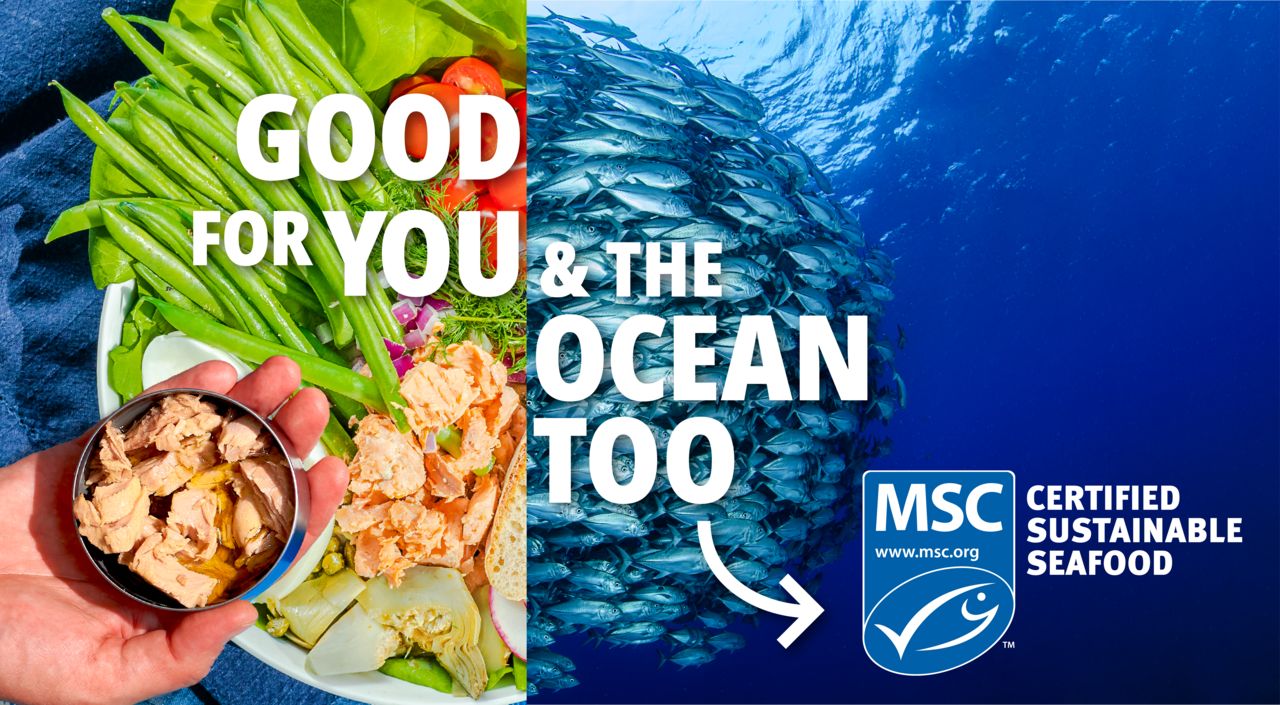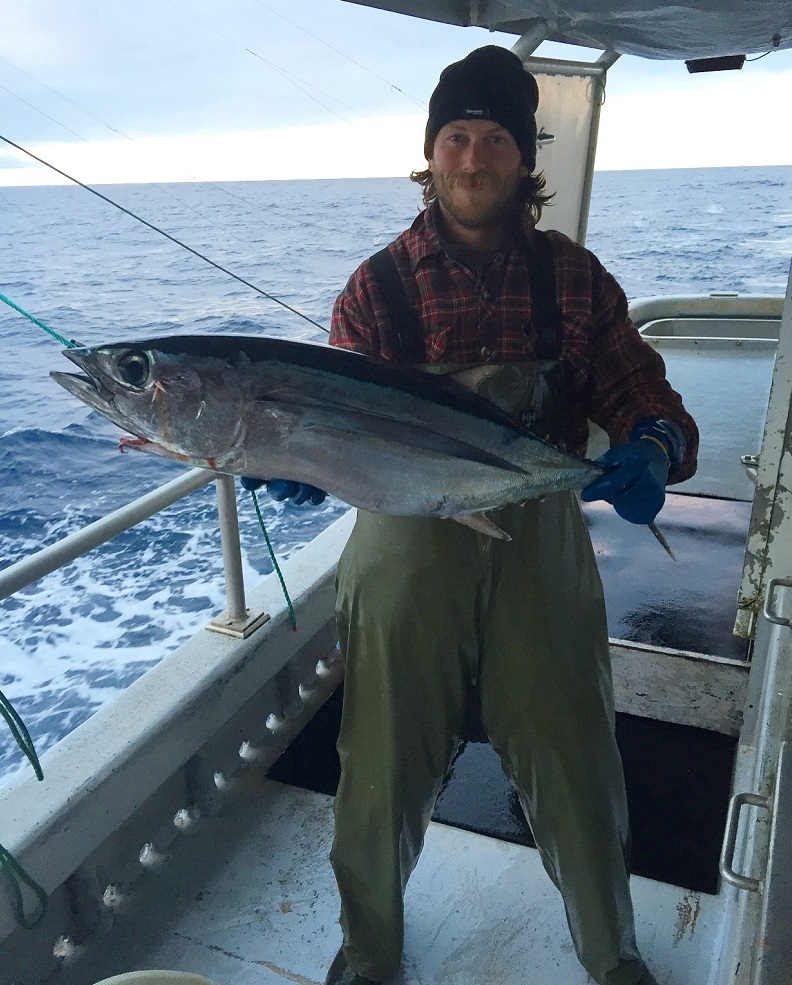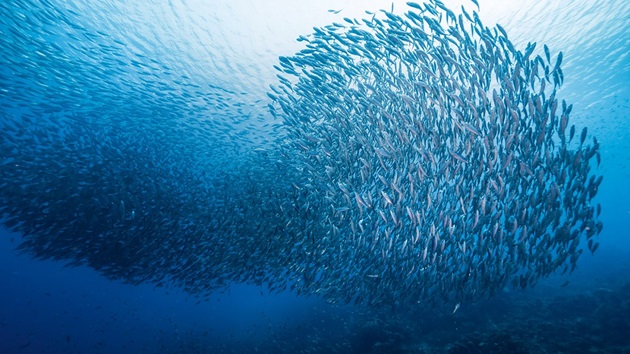In this Earth Month series, we’re breaking down what exactly makes some seafood “good for you and the ocean too.”
Seafood is widely regarded as a healthy choice; it’s high in protein and good fats and is packed full of important vitamins and minerals that are hard to get elsewhere.
Plus, wild-caught seafood doesn’t have the hefty environmental impact that many other high-protein foods have. When compared to land-based animal proteins like chicken and beef, wild caught seafood has a lower carbon footprint, and requires no land, fresh water, fertilizers, or feed.
And, when fisheries are well-managed, they can provide generation after generation with a sustainable food source. Looking for the MSC blue fish label is a great way to make sure you can get the benefits of seafood while supporting well-managed, sustainable fisheries that don’t leave a lasting impact on the ocean.
So, how does tuna stack up?

Is tuna healthy and sustainable?
Tuna is a favorite among seafood eaters, and especially in North America where it ranks among the top three most popular species year after year, second only to shrimp and salmon!
Albacore tuna (Thunnus alalunga) is a particularly versatile species of tuna that is a delicious and—when caught by an MSC certified fishery—sustainable option for a healthy, hearty meal.
Albacore tuna is good for you
Albacore can be found in many forms, including canned, fresh, and frozen, and even sashimi. Canned albacore (sometimes called white tuna) is great as tuna cakes, and lightly seared steaks make an excellent topping to a Nicoise salad.
In addition to being delicious and versatile, albacore is exceptionally healthy. It is an excellent source of selenium, Vitamins D and B-12, and other vital nutrients. And according to nutrition experts, albacore tuna is even higher in omega-3 fatty acids than yellowfin or skipjack tuna.
There are as many health benefits of omega-3s as there are ways to eat albacore tuna. From reducing the risk of heart disease, to improving eye, bone, and joint health, omega-3s can do a lot of good for the body. It can even help reduce the risk of depression.
MSC certified albacore tuna is good for the ocean
Because tuna is so popular, it’s more important than ever to make sure it comes from a sustainable source.
Thankfully, albacore tuna can be found in every ocean, including the North Pacific where it is caught by the British Columbia Albacore Tuna North Pacific fishery.
MSC certified since 2010, the BC albacore fishery uses the troll-and-jig method to selectively catch fish. Closer to shore, fishers use small boats with just a captain and one or two crew members; farther out at sea the boats are a little bigger and include a couple more crew members.

In both cases, these fishers use barbless hooks and artificial lures (jigs) instead of live bait. When the fisher sees an albacore on the line, they immediately haul it in.
This method results in extremely low bycatch for a few reasons. Unwanted fish that might just be looking for an easy meal can bite down on the lure without getting hooked; and once the fish realizes the lure is not food, it’ll move on, and the fishers won’t haul them aboard. Plus, albacore typically hunt fast-moving prey, like squid and small fish. The boats troll at speeds that mimic these small fish, so it’s unlikely that bycatch species will even be tempted by the jigs in the first place.
Albacore from this fishery can be found primarily as sashimi or fillets and in cans!
So, the next time you’re looking for tuna at the market, grab some albacore with the MSC blue fish label on it and have yourself a meal that’s both good for you AND the planet.



